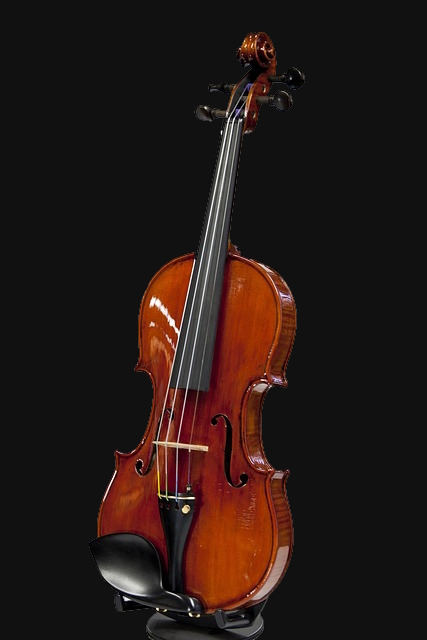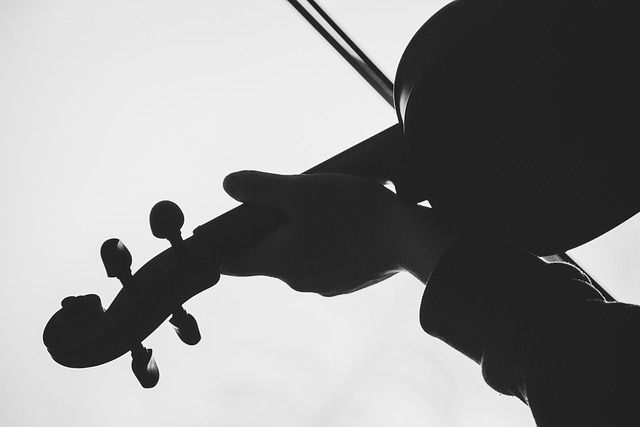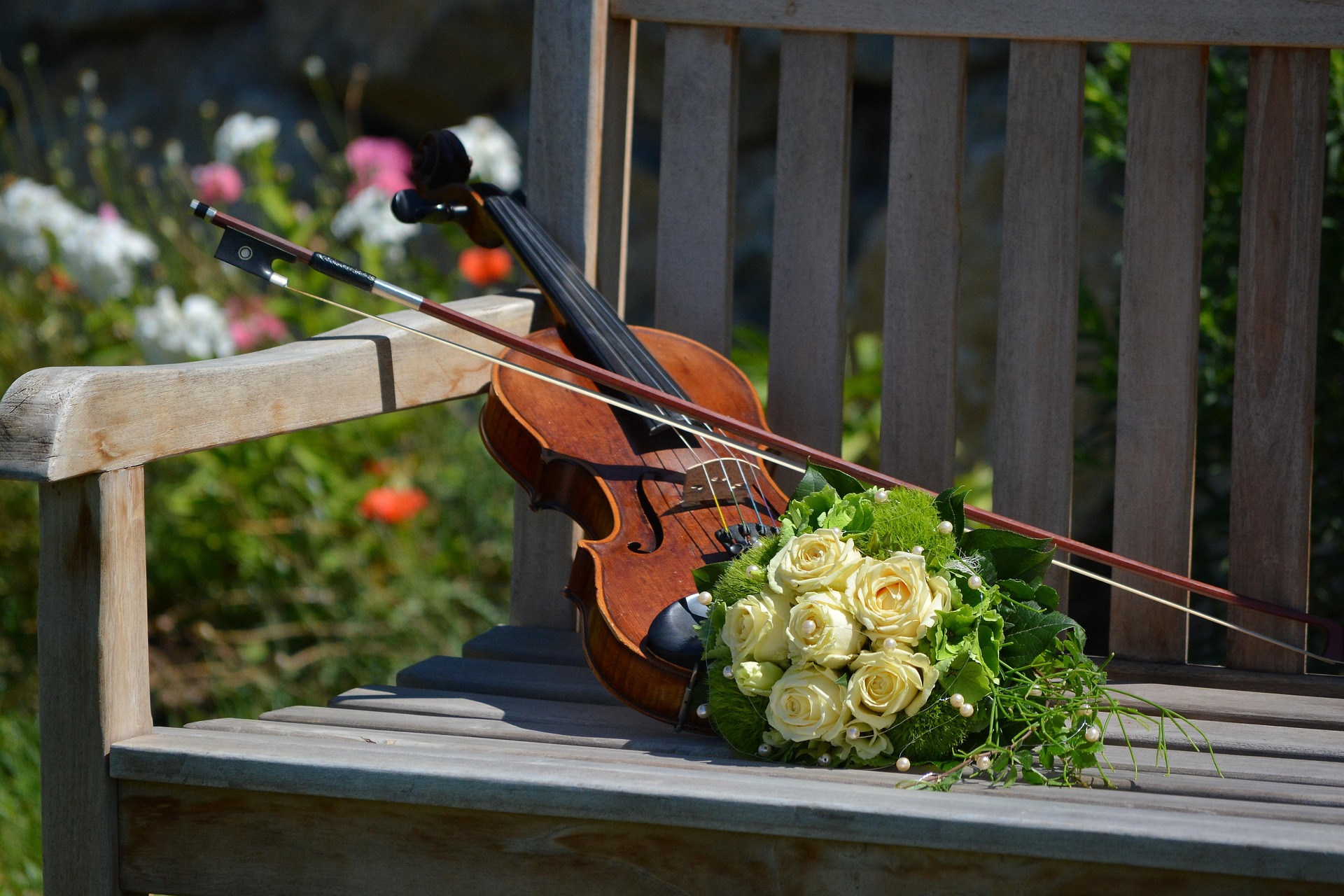The violin is one of those instruments that feels like it’s been around forever, weaving its way through concert halls, smoky bars, and dusty attics. It’s the sound of longing, precision, and sometimes, sheer virtuosic chaos. But how does this small wooden box, strung with just four strings, produce such a vast range of emotions and sounds? Let’s dive into the mechanics, physics, and a bit of the magic behind how violins work.
Table of Contents
The Anatomy of a Violin
At its core, a violin is a deceptively simple contraption. It’s a wooden body with strings stretched across it, a bridge to hold those strings up, and a few other bits to make it playable. But every piece matters, and the craftsmanship behind it is obsessive. A luthier—the person who makes or repairs violins—might spend hundreds of hours on a single instrument, tweaking details you’d never notice unless you were, well, a luthier.

The body of the violin is the hollow, hourglass-shaped box that does most of the heavy lifting for sound production. It’s usually made from spruce for the top (or “soundboard”) and maple for the back, sides, and neck. Spruce is light and resonant, while maple is denser and gives structural strength. The body amplifies the vibrations of the strings, turning tiny movements into audible sound.
The strings—typically four, tuned to G, D, A, and E—are the starting point for sound. Modern strings are often steel or synthetic-core wound with metal, but back in the day, they were made from sheep gut (yes, actual gut, though let’s not dwell on that). When you pluck or bow a string, it vibrates at a specific frequency, producing a pitch.
The bridge is a thin piece of wood that sits under the strings, transferring their vibrations to the body. It’s not glued down; it’s held in place by the tension of the strings. The bridge’s shape and placement are critical—move it a millimeter, and the violin sounds like it’s having an identity crisis.
Inside the body, there’s a soundpost, a small wooden dowel wedged between the top and back plates. It’s nicknamed the “soul” of the violin because it dramatically affects the instrument’s tone. Adjust its position, and you can make the violin brighter or warmer. It’s like the violin’s therapist, helping it find balance.
The f-holes—those curvy slits on the top of the violin—aren’t just for aesthetics. They let air move in and out of the body, enhancing resonance and projecting sound. Their size and shape are fine-tuned to optimize acoustics, like vents on a spaceship.
Finally, the bow is the violin’s partner in crime. It’s a stick of wood (often pernambuco) with horsehair stretched between its ends. The hair is coated with rosin, a sticky substance that helps it grip the strings. When you draw the bow across a string, it creates the sustained, singing tone that makes violins so iconic.
The Physics of Sound
Now, let’s get to the nitty-gritty: how does a violin actually make sound? It’s all about vibrations and resonance, with a side of physics that’s both elegant and kind of mind-boggling.
When you draw the bow across a string, the rosin-coated horsehair grabs the string and pulls it slightly before letting it snap back. This creates a “stick-slip” motion, where the string vibrates back and forth at a specific frequency. The frequency depends on the string’s length, tension, and thickness. For example, the E string is thinner and tighter, so it vibrates faster, producing a higher pitch than the thicker, looser G string.
These vibrations are tiny—think fractions of a millimeter—but they’re the spark that sets everything in motion. The string’s vibrations travel through the bridge to the top plate of the violin. The top plate starts vibrating, which makes the air inside the body move. This vibrating air pushes out through the f-holes, amplifying the sound and sending it into the world.

Here’s where it gets wild: the violin body doesn’t just amplify the string’s vibrations; it shapes them. The wood, the shape of the body, the placement of the soundpost, and even the varnish all influence which frequencies get boosted or dampened. This is why every violin has a unique voice. A Stradivarius from the 1700s might sound warm and rich, while a modern student violin might be brighter but less complex.
The body’s resonance is governed by something called Helmholtz resonance, which is the same principle that makes a bottle hum when you blow across its opening. The air inside the violin’s body oscillates at certain frequencies, amplifying the sound produced by the vibrating top plate. The f-holes control how easily air can move, fine-tuning this resonance.
The bow’s role is just as crucial. The speed, pressure, and angle of the bow affect the string’s vibration. Bow too lightly, and the sound is weak; too hard, and it’s scratchy. It’s a delicate dance, and violinists spend years learning to control it. Fun fact: the bow hair is always from a horse’s tail, and it’s usually from stallions because their hair is coarser and grips better.
Why Violins Sound Different
If violins were just physics, every one would sound the same, like identical widgets off an assembly line. But they don’t. A $100 factory-made violin sounds like a tin can compared to a $10 million Stradivarius. Why?
First, there’s the materials. High-end violins use carefully selected spruce and maple, often aged for decades to enhance resonance. The wood’s grain, density, and even the climate it grew in can affect the sound. Luthiers are obsessive about this—some even tap the wood to “listen” for its acoustic properties.
Second, there’s the craftsmanship. The thickness of the top and back plates (down to tenths of a millimeter), the arching of the plates, and the placement of the soundpost and bridge all shape the sound. Master luthiers like Antonio Stradivari spent lifetimes perfecting these details. Modern science still can’t fully explain why Stradivari’s violins are so exceptional, though theories range from unique varnish recipes to the density of the wood used during the “Little Ice Age” of the 17th century.
Third, there’s the varnish. It’s not just a protective coating; it affects how the wood vibrates. Too thick, and it dampens the sound; too thin, and it doesn’t protect the wood. Luthiers guard their varnish recipes like state secrets.
Finally, there’s the player. A great violinist can make a mediocre violin sing, while a beginner can make a Stradivarius sound like a cat in distress. Technique—bow control, vibrato, intonation—shapes the sound as much as the instrument itself.
The Violin’s Range and Versatility
A violin’s four strings cover a range of about four octaves, from G3 (196 Hz) to around E7 (2637 Hz), though skilled players can push higher with harmonics. But it’s not just about pitch. The violin can whisper, scream, weep, or dance, all through subtle changes in bowing, fingering, and dynamics.
Techniques like vibrato (wobbling the finger on the string to vary pitch) add warmth and expressiveness. Pizzicato (plucking the strings) creates a percussive, playful sound. Double stops (playing two strings at once) or chords (three or four strings) add harmony. Then there are advanced tricks like spiccato (bouncing the bow) or sul ponticello (playing near the bridge for a glassy tone).
This versatility makes the violin a staple in classical music, but it’s just as at home in folk, jazz, or even rock. Ever heard a bluegrass fiddle shred or a jazz violinist like Stéphane Grappelli weave improvisational magic? The violin’s ability to cross genres comes from its expressive range and the player’s creativity.
The History and Culture of Violins

The violin as we know it emerged in 16th-century Italy, with makers like Andrea Amati laying the groundwork. By the 17th and 18th centuries, Cremona became the violin-making capital, thanks to legends like Stradivari and Guarneri. Their instruments are still the gold standard, with some fetching millions at auction.
Violins became the backbone of orchestras, chamber music, and solo performance. Composers like Vivaldi, Bach, and Paganini pushed the instrument’s limits, writing music so demanding it’s still a benchmark for virtuosity. Paganini, in particular, was such a beast on the violin that people thought he’d sold his soul to the devil. (He didn’t, but the rumor stuck.)

Pictured above: Niccolò Paganini
Today, violins are everywhere—not just in concert halls but in subway stations, wedding bands, and YouTube covers. Electric violins, with pickups or MIDI capabilities, have expanded the instrument’s possibilities, blending acoustic tradition with modern tech.
The Challenges of Playing
Learning the violin is not for the faint of heart. It’s one of the hardest instruments to master, thanks to its lack of frets (you have to nail the pitch by ear), the complexity of bowing, and the physical demands of holding it for hours. Beginners often sound like they’re torturing a small animal, and even pros practice daily to stay sharp.
The physicality is real. Violinists develop calluses on their fingers and “violin hickeys” (red marks) on their necks from the chinrest. Shoulder pain is common if your posture isn’t perfect. And don’t get me started on the cost—decent student violins start at a few hundred bucks, and strings alone can set you back $50 a set.
But the payoff is worth it. There’s something visceral about drawing a bow across a string and hearing the violin respond. It’s like the instrument is an extension of you, translating your emotions into sound.
The Magic Beyond Mechanics
Science explains a lot about how violins work, but not everything. There’s a reason people get misty-eyed listening to a haunting violin solo or lose their minds at a fiddler’s reel. The violin has a way of cutting through noise—literal and emotional—to say something profound.
Maybe it’s the centuries of craftsmanship, the stories baked into every scratch and dent, or the sheer human effort it takes to play one well. Whatever it is, the violin doesn’t just make sound; it speaks. And when it does, you listen.
So, the next time you hear a violin—whether it’s in a symphony hall or a street performer’s case—think about the physics, the wood, the hands that made it, and the soul behind the strings. It’s a small miracle, disguised as a wooden box.
Thank you for reading this article. Please check out our catalog for more!

